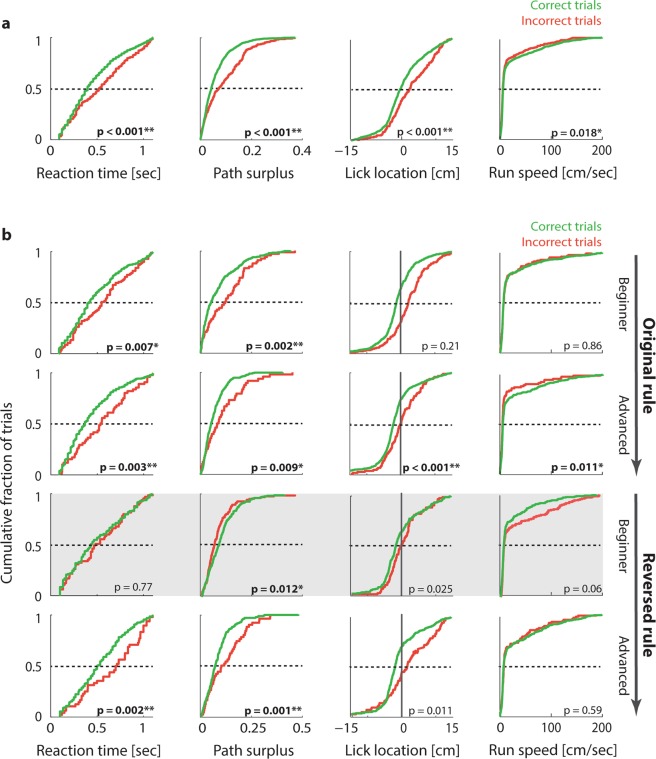Figure 4.
After rule acquisition mice are able to predict errors. (a) Differences in reaction time, path surplus, running speed and lick location for correct versus incorrect trials, pooled across five animals in the original task. Left panel: Cumulative distribution function (CDF) of reaction times, pooled across animals for all trials of the original task. Green: Correct trials. Red: Incorrect trials. Insets: P-values resulting from a Kolmogorov-Smirnov test of the distribution differences between correct and incorrect trials (*p < 0.05; **p < 0.01 after correction for multiple comparisons; see Methods). (b) Differences in reaction time, path surplus, running speed and lick location for correct versus incorrect trials, at different stages of rule acquisition. Top row: Cumulative distribution function (CDF) of reaction times (left), path surplus (centre left), lick positions (centre right) and running speed (right), for the first 30% of trials of ΔOri = 30° or easier, beginning at training stage 5, pooled across all animals. Green: Correct trials. Red: Incorrect trials. Insets: p-values resulting from a Kolmogorov-Smirnov test of the distribution differences between correct and incorrect trials (*p < 0.05; **p < 0.01 after correction for multiple comparisons; see Methods). Second row: Same for the last 30% of trials of ΔOri = 30° or easier in the original task. Third row: Same for the first 30% of trials of ΔOri = 30° or easier after the first rule reversal. Grey shade in background highlights that this is the time point when distribution differences are transiently diminished (reaction time, path surplus and licking position) and/or reversed (path surplus and running speed). Bottom row: Same for the final 30% of trials of ΔOri = 30° or easier after the first rule reversal.

